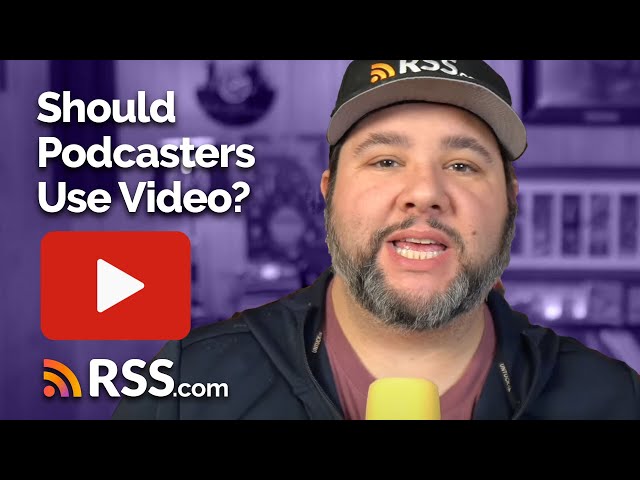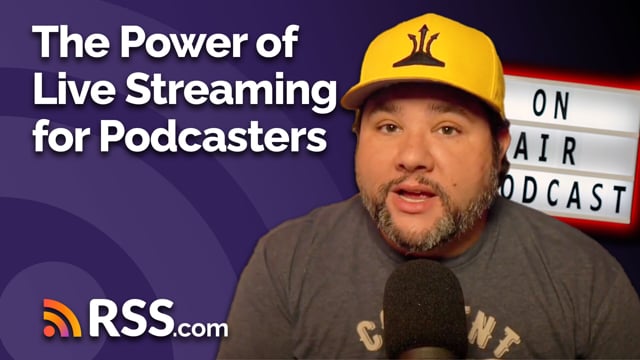Podcasting is evolving rapidly, and one of the hottest debates of 2025 is whether podcasters should add a video component to their shows.
With YouTube and Spotify emphasizing video content, many podcasters are wondering if they should follow suit.
However, the answer isn’t straightforward. In this article, we’ll explore the pros and cons of video podcasting, key considerations when making the decision, and tools to help you if you choose to take the leap.
Why I Added Video to My Podcast
Last year, I noticed a decline in podcast downloads – a trend observed by many in the industry. To counteract this and reach a wider audience, I decided to experiment with video.
Since my editor had already incorporated video into their editing services, the transition was relatively seamless. Additionally, platforms like YouTube and Spotify have been prioritizing video content, making it an increasingly attractive option.
The Power of Audio Storytelling
Before diving into the pros and cons of video, it’s important to acknowledge the strength of audio-only content.
Take, for example, Orson Welles’ 1938 radio broadcast of War of the Worlds. This broadcast terrified listeners because they couldn’t see what was happening; they had to rely solely on their imagination.
If it had been a television production, the illusion would have been lost. This example underscores that audio storytelling can be deeply engaging, sometimes even more so than video.
Pros of Video Podcasting
1. Better Engagement
Video platforms like YouTube and Spotify have built-in interaction tools, allowing viewers to like, comment, and engage more easily than traditional audio platforms.
2. Increased Discoverability
Algorithms on YouTube and Spotify favor video content, which can help podcasts reach a broader audience.
3. Stronger Audience Connection
Seeing the host builds trust and credibility. While audio podcasts can foster strong connections, video enhances this effect.
4. Easier Content Repurposing
With video, you can create clips for social media, promotional content, and additional marketing materials.
Cons of Video Podcasting
1. More Time and Effort
Editing video requires more time than editing audio. Additionally, YouTube and Spotify do not support direct RSS video uploads, requiring additional steps for distribution.
2. Higher Costs
Producing video requires investment in cameras, lighting, and editing software. You may also need to edit both an audio and a video version of each episode.
3. Not Always Necessary
If your audience prefers audio, adding video might not provide significant value. Some content does not require a visual component and may not benefit from the added complexity.
The Difference Between Audio and Video Formats
The experience of consuming audio versus video content is fundamentally different. Consider how baseball is broadcast on TV versus radio.
On radio, commentators provide a detailed play-by-play, while TV announcers offer additional insights rather than describing every moment.
Similarly, if you’re producing a video podcast, you may need to incorporate more visual elements while ensuring that audio-only listeners still get a full experience.
If you’re considering video, here are some tools to make the transition easier:
1. Zoom
Zoom is a familiar platform that allows you to record video while extracting high-quality audio.
2. Riverside.fm
For higher-quality recordings, Riverside.fm captures both audio and video locally before uploading, ensuring optimal quality.
Even if you don’t want to record full video episodes, you can still have a presence on YouTube using PodViz by RSS.com. This tool converts audio-only content into engaging video formats with waveform visualizations and chapter markers.
Should You Add Video to Your Podcast?
Ultimately, the decision depends on your content, audience, and workflow. Here are key questions to consider:
- Will video enhance the experience without diminishing audio quality?
- Can you reasonably integrate video production into your process?
- Is your audience likely to engage with video content?
If video feels like a barrier, start with audio and consider adding video later. Regardless of your choice, ensure your podcast is available on platforms like YouTube and Spotify to maximize reach.
What do you think? Should podcasters add video? How would you approach it? Let us know in the comments!
For more podcasting tips and insights, visit rss.com and explore our PodViz audio-to-video technology.

